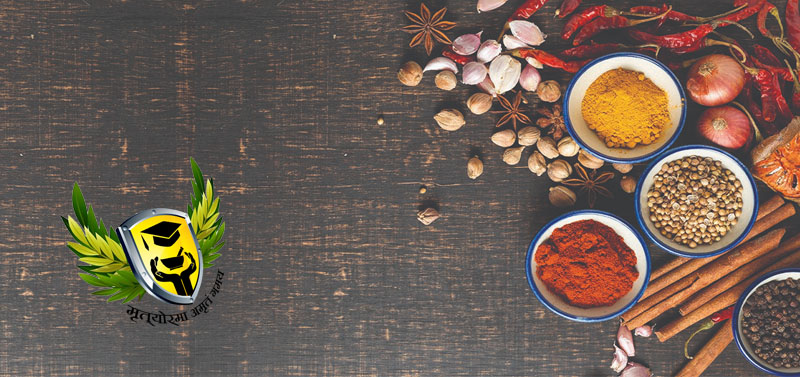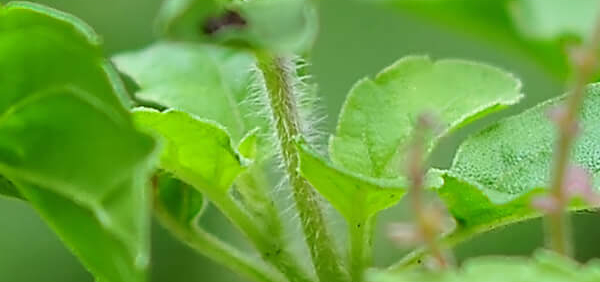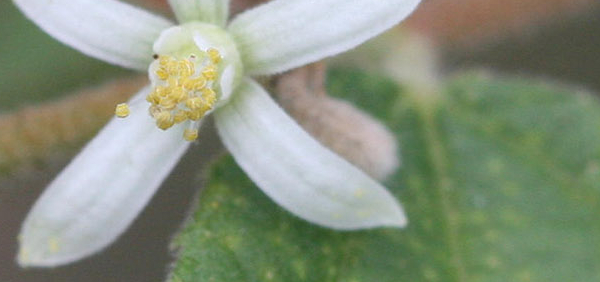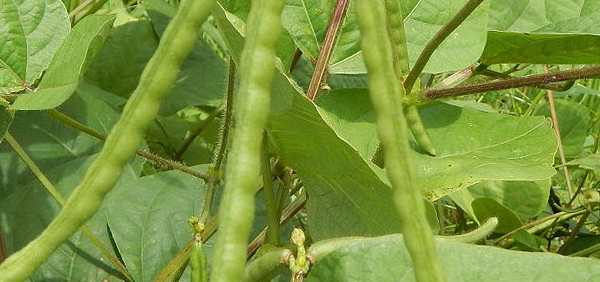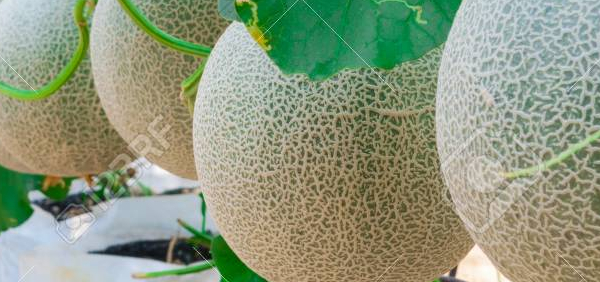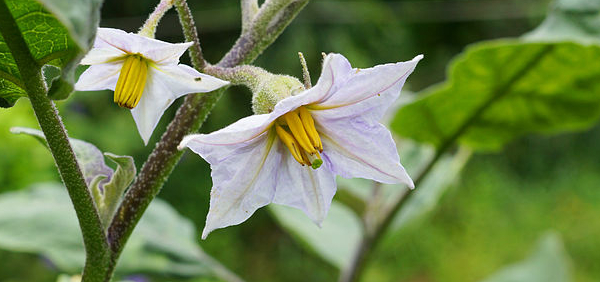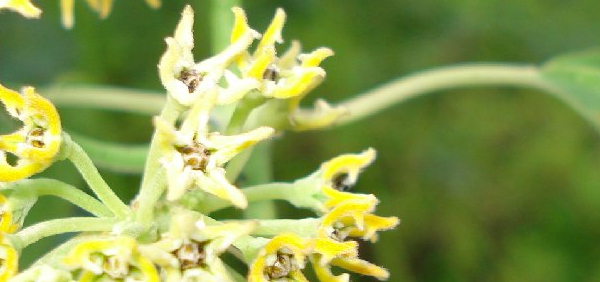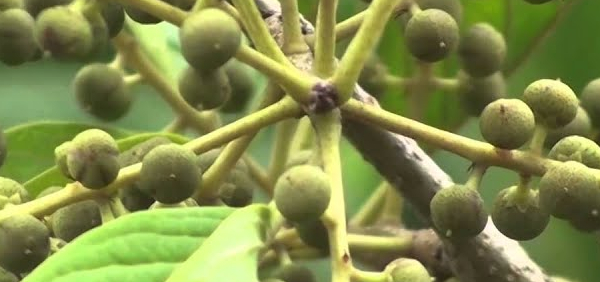yashtimadhu :
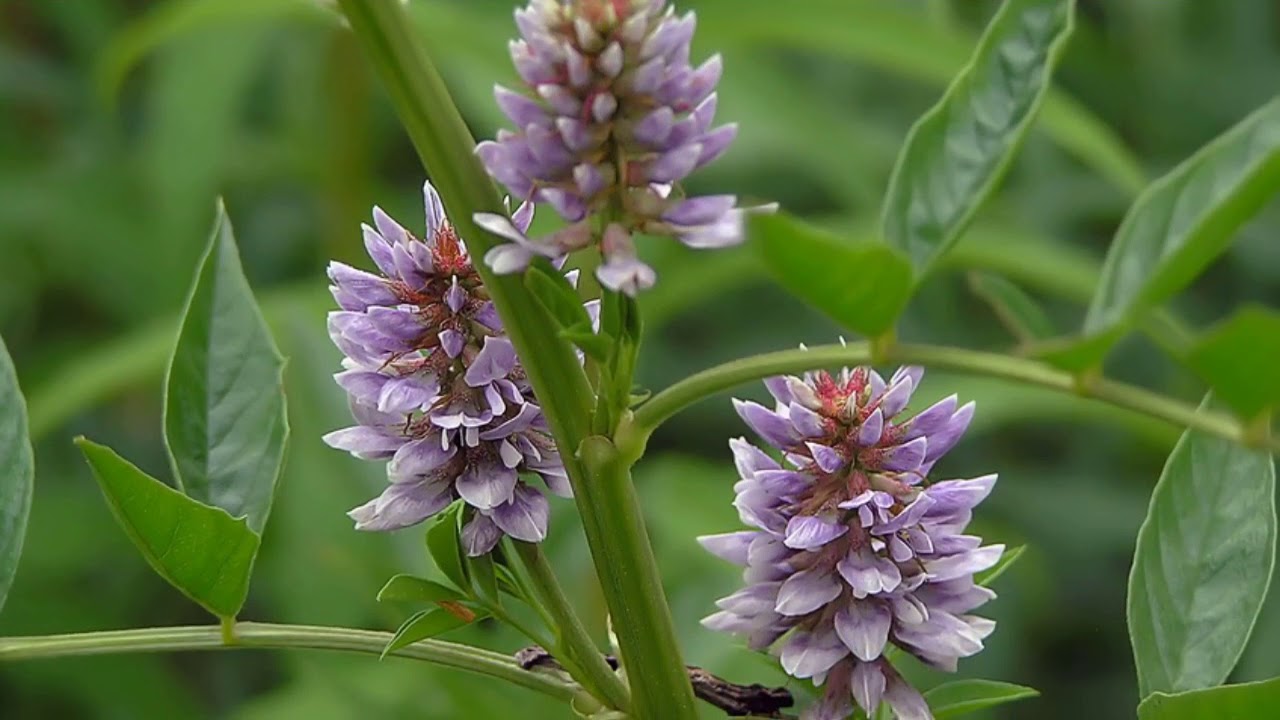
HISTORICAL AND MYTHOLOGICAL REVIEW:
Therapeutic use of licorice dates back to the Roman Empire.Taxonomical Classification
Kingdom: Plantae - Plants
Order: Fabales
Family: Fabaceae
Genus: Glycyrrhiza
Species: Glycyrrhiza glabra
Allied species:
VERNACULAR NAMES
Sanskrit: yastyahvasya, yashtimadhu, madhuka, yashti, madhur, atirasa, saumya, shoshapaha, jalaja, madhuparni, madhuyashtiEnglish: licorice (root) sweet wood
Hindi: Mulethi, Jethimadhu
Urdu: Mulethi, Asl-us-sus
Telugu: Yashtimadhukam
Bengali: Yashtimadhu
Marathi: Jeshtimadh
Oriya: Jatimadhu, Jastimadhu
Gujarathi: Jethimadh
Tamil: Atimadhuram, Irattimadhuram
Malayalam: Atimadhuram, irattimadhuram
Kannada: Atimadhura, Jeshtamadhu
Punjabi: Jethimadh, Mulathi
Arabic: Shagaret es-sus Erqsus
Assamese: Jesthimadhu, Yeshtmadhu
French: : Reglisse, Reglisse glabre, Reglisse Officinale
Varities:
Licorice comprises about 20 species of sticky, sometimes hairy perennial herbs with creeping rootstalk. One of the most common types used medicinally is Glycyrrhiza glabra (glykys, the Greek word for “sweet,” rhiza for “root,” and glabra from the Latin for “smooth”).Definition
·
The word Glycyrrhiza is derived
from the Greek term glykos (meaning sweet) and rhiza (meaning root).
·
Glycyrrhiza
glabra Linn, commonly known as ‘liquorice’ and ‘sweet wood’
Synonyms
Synonyms in Ayurveda: yastyahvasya, yashtimadhu, madhuka, yashti, madhur, atirasa, saumya, shoshapaha, jalaja, madhuparni, madhuyashtiThe word
"liquorice" is derived (via the Old French licoresse) from the Greek γλυκύρριζα
(glukurrhiza), meaning "sweet root",[8] from γλυκύς
(glukus), "sweet"[9] and ῥίζα (rhiza), "root",[10][11] the name provided by
Dioscorides.[12] It is usually spelled "liquorice" in Commonwealth
usage, but "licorice" in the United States.
Rasa: Madhura
Guna: Guru Picchila
Veerya: Sheetha
Vipaka: Maduram
Karma: Pittahara Vatahara
Yastimadhu
(Glycyrrhiza glabra) is commonly known as mulethi and mostly available in
Indian Kitchen.
Health benefits of
Yastimadhu are described in Ayurveda many years ago.
This herb has a
Soothing effect on the throat and pharynx is good so the use of Yastimadhu is
good for hoarseness of voice.
This herb has the
antacid, anti-ulcer genic, anti-inflammatory, anti-oxidants, anti-Alzheimer,
anti-cancer, analgesic, immune modulator, anti-bacterial, anti-asthmatic,
anti-arthritic and aphrodisiac properties.
Roots of this herb
contain 3.6% glycyrrhizin which is a yellow amorphous powder-asparagine, a
glycoside isoliquirtin 2.2%, glucose 3.8%, starch, gum, mucilage, amorphous,
sulphuric acid and metallic acids, calcium and magnesium salts.
All these ingredients
are packed with healing properties for the human body.
Liquorice flavours are used as candies or sweeteners, particularly in some European and Middle Eastern countries.
Cultivation:
Requires a deep well cultivated fertile moisture-retentive soil for good root productionPropogation:
Mode of Propagation
Seeds, Cuttings.
Harvesting:
STANDARDIZATION:
Standardisation of Licorice by Metabolomic Profiling of Flavanones and ChalconesPhytochemistry:
The
principal constituent of liquorice to which it owes its characteristic sweet
taste is glycyrrhizin, which is present in
different varieties in a concentration of 2-14%.
This
principle is not found in the aerial parts of the plant.
Other
constituents present in liquorice are:
·
glucose (up to 3.8%),
·
sucrose (2.4-6.5%),
·
mannite, starch ( 30% ),
·
asparagine,
·
bitter principles,
·
resins (2-4%),
·
a volatile oil (0.03-0.035%) and
·
coloring matter.
v The
yellow color is due to the anthoxanthin glycoside, iso liquiritin which,
undergoes partial conversion to liquiritin during drying and storage of roots.
v Iso
liquiritin gives on hydrolysis iso liquiritigenin,
v while
liquiritin gives liquiritigenin as a glucone.
v Both
iso liquiritin and liquiritin are bitter with a sweet after-taste and stimulate
the salivary glands.
v Commercial
samples contain c. 2.2% of iso liquiritin.
v A
steroid estrogen, possibly estriol, is also reported to be present in
liquorice.
v The
presence in the inner bark of a hemolytically active saponin has been
reported1.
v The
plant contains phytoestrogens in the form of isoflavones such as formononetin;
glabrone, neoliquiritin and hispaglabridin A & B.
PHARMACOLOGY:
Glycyrrhizin,
a glycoside obtained from G. glabra was studied for its anti-arthritic and
anti-inflammatory effect on formaldehyde induced rat-paw edema in
adrenalectomised rats.
It was
found to potentiate the anti-arthritic action of hydrocortisone in rats
Parts used for medicinal purpose
Leaves, Root, ,Dosage:
Licorice
is available in various forms
–
root, powder and extracts.
· Licorice root can be chewed directly
· while licorice tea (prepared by boiling licorice root in water) is also extremely beneficial as a home remedy.
v Daily intake of 5-6 grams of licorice powder is considered
safe
v while 250-500 mg of concentrated extracts can be taken
thrice a day.
Antidote:
Treatment
is supportive including correction of electrolytes.
Purification:
Purification of high-purity glycyrrhizin from licorice using hydrophilic interaction solid phase extraction coupled with preparative reversed-phase liquid chromatography.
Substitute:
gunja rootAdultrants:
Controversy:
De-glycyrrhinized licorice has been investigated for its clinical use and saftey. Its use has been controversial.Commercial value:
Consumption of licorice root is expected to rise in the coming years in the pharmaceutical industry owing to its inherent herbal propertiesMorphology:
It is a hardy herb or undershrub; the leaves are
multifoliolate, imparipinnate; the flowers are in axillary spikes,
papilionaceous, lavender to violet in colour; the pods are compressed and
contain reniform seeds. The rootstock, which is stout, throws off a large
number of perennial roots. The dried, peeled or unpeeled underground stems and
roots constitute the drug known in the trade as Licorice.
Leaves, stem and root:
The
plant is a herbaceous perennial. It is 1 to 2 m high and has a long sturdy primary
taproot.
The
taproot is 15 cm long and subdivides into 3 to 5 subsidary roots, 1.25 m in length.
There
are several horizontal woody stolons which may reach 8 m.
New
stems are produced every year.
They
are sturdy, erect, branched either from the base or from further up, and are
generally rough at the top.
The
foliage leaves are alternate, odd pinnate and 10 to 20 cm long.
The
leaflets are in 3 to 8 pairs.
The
stipules are very small and drooping.
Flower and fruit:
The
axillary inflorescences are upright, spike-like and 10 to 15 cm long.
The
individual flowers are 1 to 1.5 cm long, bluish to pale violet and
short-pedicled.
The calyx is short, bellshaped and glandular-haired.
The
tips of the calyx are longer than the tube, and are pointed lanceolate.
Petals
are narrow, the carina petals are not fused, and they are pointed but not
beaked.
The fruit
is a pod, 1.5 to 2.5 cm long, and 4 to 6 mm wide.
It is
erect and splayed, flat with thick sutures, glabrous, somewhat
reticulate-pitted, and usually has 3 to 5 brown, reniform seeds
Histology:
Transverse
section of stolon more or less rounded. Phellem severeal layered with tabular
cells; outer layers filled with reddish brown contents, inner colourless.
Phellogen indistinct; phelloderm three to five layered, collenchymatous; some
of the cells contain calcium oxalate and minute starch grains. Secondary phloem
with numerous concentrically arranged bundles of phloem fibres and surrounded
by a parenchymatous sheath containing prisms of calcium oxalate. Medullary rays
distinct, bi-to multiseriate, parenchymatous, in continuation with those of
xylem. The rays are narrower in xylem and wider in phloem region. Xylem
consists of vessels, fibres and lignified wood parenchyma. The unpeeled drug
shows the presence of polyhedral tubular brownish cork cells. In case of
stolons, the pith is present and is parenchymatous. The root is characterized
by the presence of tetrarch xylem and absence of pith.
Powder:
It shows plenty of starch grains, hexagonal crystals vessel elements are with
reticulate wall pitting."
Geographical distribution:
Local: Bahariyah and Siwa oasesECOLOGICAL ASPECT:
Liquorice
enjoys fertile, sandy or clay soil near a river or stream where enough water is
available for the plant to flourish in the wild, or under cultivation where it
can be irrigated.
Plant conservation:
Widely distributed in Eurasia, Glycyrrhiza glabra is not considered to be threatened. Where it is cultivated as a crop, it is normally harvested in a sustainable manner, although there are some concerns that the commercial harvest of rhizomes can be destructive to naturally occurring populations and their habitatsGeneral Use:
·
It is known to be an
effective herb to resolve the respiratory complications. It acts as the
wonderful emollient and it has the soothing effects on the throat as well as
pharynx. Hence the use of this herb is quite good in the treatment of a cough,
hoarseness of voice, chest congestion, sore throat, bronchitis, chronic
bronchitis, and whooping cough. This herb helps to boost up the immune system
and plays an important role in the treatment of asthma and various allergic
reactions in the body.
·
Roots of this herb
support the good health of digestive system. This herb helps to lower down the
acid levels in intestine. It is quite good to manage the problem of the
indigestion and heartburn. Hence the use of this herb is quite effective in the
treatment of gastrointestinal disorders like Irritable Bowel Syndrome (IBS),
duodenal ulcers, peptic ulcers, and gastritis.
·
This herb supports the
good health of the liver and also enhances the bile secretion. Moreover, this
herb helps to lower the cholesterol levels in the body too.
·
This herb is good for
the treatment of hypothyroidism. It helps to increase the secretion of thyroid
hormones. Furthermore, this herb also helps to manage the hormonal imbalances.
·
Roost of this herb
contains a substance which prevents the conversion of testosterone into
dihydrotestosterone. Dihydrotestosterone is the hormone which stimulates cell
division in the male prostate gland. Hence this herb is quite good to reduce
the size of the prostate gland and also helps to manage the symptoms associated
with benign enlargement of the prostate.
·
This herb is packed with
anti-microbial activities. Hence it boosts up the bodys immune system. It also
increases the bodys ability to fight against the various viral and bacterial
infections. Anti-fungal properties of this herbs are quite good in the
treatment of athletes foot.
Therapeutic Uses:
|
Allergy |
Allergic rhinitis or hay fever |
|
Brain
& Mind Health |
Depression, emotional stress, memory loss |
|
Digestive
Health |
Acidity, Chronic Gastritis, Canker sores, Constipation, duodenal ulcer, gingivitis, heartburn, indigestion, peptic ulcer, mouth ulcer, tooth decay, Ulcerative colitis, hepatitis and inflammation
of gallbladder, |
|
Heart
Health |
High Cholesterol level |
|
Hormones |
Addison’s disease |
|
Joint,
Muscle & Bones |
Arthritis, Bursitis, Fibromyalgia, Gout |
|
Respiratory
Health |
Cough, Asthma, Bronchitis, |
|
Skin
& Hairs |
Baldness, Eczema, Psoriasis, |
OTHERS
|
General
Indications |
General debility, Chronic Fatigue, Physical exhaustion |
|
Infections |
Athlete’s foot, Intestinal infections,
Conjunctivitis, sore throat |
|
Women
Health |
Menopause, Excessive uterine bleeding, |
|
Men
Health |
Prostate enlargement |
Systemic Use:
The main beneficial effects of Mulethi (Yashtimadhu) are on digestive system and respiratory system.
It helps in relieving gastric symptoms
such as heartburn, burning sensation in the abdomen, peptic and duodenal ulcer,
abdominal colic, GERD and chronic gastritis.
Administration:
1. It is
mainly used in the form of powder, may be used in the amount range from 5 to 6
grams per day.
2. It is
also used in the form of concentrated extracts may be used in the amounts
ranging from 250–500 mg three times a day.
3. People
also enjoy Licorice tea. It has pleasant taste and no need to add sugar.
Yashtimadhu Powder - Twice Daily with Water, Lukewarm Milk
or as recommended by physician
·
Best Time to Take:
Before Meal in abdominal diseases like gastritis, ulcer etc.
Pharmacological:
1. Anti-tussive & expectorant activity
2. Antioxidant activity
3. Skin lightening and skin tightening activity
4. Anti-inflammatory activity - Liquorice has powerful
anti-inflammatory and anti-allergic activity and
· can be used to treat chronic inflammation like rheumatic
problems & arthritis, skin diseases and autoimmune diseases.
· It is also used for preventing any inflammatory conditions
related to eye and
· also to treat
conjunctivitis with the help of glycyrrhizin activity that counteracts negative
effects caused by cortisol.
5. Anti-viral effects
6. Anti-fungal activity - Roots of mulethi are very effective
in protecting against virus, bacteria and fungi due to the presence of
Glycyrrhizin that blocks the microbial growth.
7. Anti-bacterial Activity
8. Anti-malarial activity - The root extract possesses the power to
control malaria (as per preliminary research), influenza and also helps in the
treatment of herpes resulting in virus suppression and severity of sores.
9. Anti hyperglycemic activity
10. Immuno stimulatory
effects –
·
Root extracts of mulethi
aids in increasing the production of lymphocytes and macrophage thereby
improving your defense mechanism & preventing microbial attack.
·
It also helps in
minimizing immune related allergic reactions and autoimmune complications.
11. Memory enhancing
activity –
·
Roots of licorice exert
supportive effect on the adrenal gland and thus indirectly aid in stimulating
the brain.
·
It not only decreases
the effects of amnesia & improves learning but its antioxidant property
(mulethi contains flavonoids) renders a shielding effect on the brain cells.
12. Hepatoprotective
activity –
·
Licorice is one of the
most common traditional remedy used to treat jaundice.
·
Its antioxidant property
is the key for preventing your liver from the action of free radicals and toxic
materials.
·
This herb is also
reported to exhibit protection against diclofenac induced toxicity and also, in
inhibiting damage of liver.
13. Anticoagulant - Glycyrrhizin
is the first plant based inhibitor of thrombin.
·
It is found to prolong
the thrombin and fibrinogen clotting time.
·
It also increases plasma
recalcification duration.
· Glycyrrhizin causes inhibition in thrombin induced platelet aggregation
14. Hair growth stimulatory activity - The hydro-alcoholic
extract of liquorice showed good hair growth promoting activity.
Clinical trials:
Research:
Properties of glycyrrhizin are under preliminary research, such as for hepatitis C or topical treatment of psoriasis, but the low quality of studies as of 2017 prevents conclusions about efficacy and safety.Precautions:
not knownToxicity studies:
Use in other system of medicine:
In China, licorice is considered a superior balancing or harmonizing agent and is added to numerous herbal formulas.CONCLUSION:
Formulations
1. Amrutadha taila I Taila Vatarakta, kshatakshina, kampa, akshepa Ch.chi.29/109
2. Amrutaprashaghrita I Ghrita Kshatksheena Ch.chi.11/36
3. Anutaila I Taila Nasyakarma Ch.su.5/63
4. Anuvasanayamaka basti I Taila Bruhana,vatapittagna Ch.si.4/9
5. Apatyakari sasthikadi gutika I Gutika Vajikaranakarma Ch.chi.2/2-5
6. Asthama veganashaka yoga I Gutika Visha–Astham vegnashaka Ch.chi.23/52
7. Bhallatakadhaghrita I Ghrita Kaphaja Gulma Ch.chi.5/145
8. Bijakaristha I Arishtha Pandu Ch.chi.16/109
9. Brahmarasayana I Avaleha Rasayanakarma Ch.chi.1/1-49
10. Bruhanigutika I Gutika Vajikaranakarma Ch.chi.2/1-27
11. Bruhatashatavarighrita I Ghrita Pittaja Yoniroga, shukradosha, vrushya, kshata-kshaya, raktapitta Ch.chi.30/66
12. Chandanadhataila E Taila Dahayukta Jwara Ch.chi.3/258
13. Chandanadi niruhabasti I Kashaya Daha, atisara, pradara Ch.si.3/50
14. Dhumavarti I Varti Shirashoola, Gaurava Ch.su.5/21
15. Dwitiya Brahmarasayana I Avaleha Rasayanakarma Ch.chi.1/1-58
16. Eladigutika I Gutika Urakshata, kasa, shwasa Ch.chi.11/21
17. Erandamuladi niruhabasti I Kashaya Deepana, lekhana Ch.si.3/40
18. Guduchyadi Niruhabasti I Kwatha Jwara Ch.chi.3/247
19. Guduchyadi taila I Taila Vatarakta Ch.chi.29/121
20. Guduchyadi taila E Taila Vataja Yoniroga Ch.chi.30/59
21. Haridradighrita I Ghrita Pandu, kamala Ch.chi.16/53
22. Haritkiyoga (Pancham) I Ghruta Rasayanakarma Ch.chi.1/1-76
23. Haritkiyoga (Sastha) I Ghruta Rasayanakarma Ch.chi.1/1-77
24. Amrutadi ghrita I Ghrita Vatarakta Bp.mk.2/2.29/102
25. Amrutahya taila I Taila Vatarakta Bp.mk.2/2.29/138
26. Bhadravaha ghrita I Ghrita Ushnavata Bp.mk.2/3.36/45
27. Bruhtyadi kwatha I Kwatha Kruchhadoshatrayapaha Bp.mk.2/3.35/29
28. Darvi taila E Taila Medhra-roge abhyanga Bp.mk.2/4.53/22
29. Dashanga lepa E Lepa Visarpa, visha, visphota Bp.pk.1/2.7(vi)/95
30. Dashanga lepa E Lepa Visarpa, kushtha, jwara Bp.mk.2/4.56/32
Glycyrrhiza
glabra, also known
as sweet wood, belonging
to family
Fabaceae/Leguminaceae is native
to the Mediterranean and certain
areas of Asia. .
ü Glycyrrhizin
a
pentacyclic triterpenoid β-amyrin compound,
accounts for the
sweet taste of liquorice
root.
ü This compound represents a mixture of
potassium-calcium-magnesium salts
of glycyrrhizinic acid that
varies within a
2-25% range.
ü Traditional
applications across diverse
cultures include as both
a demulcent and
an anti-inflammatory, often
used to soothe respiratory or
gastrointestinal (GI) symptoms.
ü The parts
of G. glabra
used traditionally is a prophylasis (for gastric and duodenal ulcers and
in dyspepsia) in Indian system of medicine.
ü It also
recommended as a laxative, anti-anthalmentic and
anti-viral agents. It also
exhibited anti-inflammatory
activity & can be used in Addison’s disease, arthritis etc.
ü Both the
traditional & pharmacological
effects of G. glabra may be due to
pharmaceutical constituents
(glycyrrhyzin etc.).
ü Future sophisticated techniques may help to explore scientific proof which can help to prove its efficacy in commercial formulations
Ayurvedic Formulations:
Common Ayurvedic Formulations of yashtimadhu with their IndicationsBrahma Rasayana
Sukumaram Kashayam
Trichup Herbal Hair Pack Powder
G3 Triple Action Ayurvedic Hair Wash - G3 Hair Wash keeps hair soft, silky and manageable. It is completely safe & free from harmful chemicals.
KEY WORDS: Yastimadhu , Glycyrrhiza glabra , mulethi , licorice
- » Classification and names of yashtimadhu
- » Synonyms and definitions of yashtimadhu
- » Drug Properties of yashtimadhu
- » Chemical Constituents of yashtimadhu
- » Standardization of yashtimadhu
- » Parts used and Dosage of yashtimadhu
- » Morphology and Histology of yashtimadhu
- » Distribution and Conservation of yashtimadhu
- » Cultivation of yashtimadhu
- » yashtimadhu in the market
- » Medicinal Uses of yashtimadhu
- » Researches and clinical trails of yashtimadhu
- » yashtimadhu in other sytems of medicine
- » Ayurvedic formulations with yashtimadhu
- » Images of yashtimadhu



